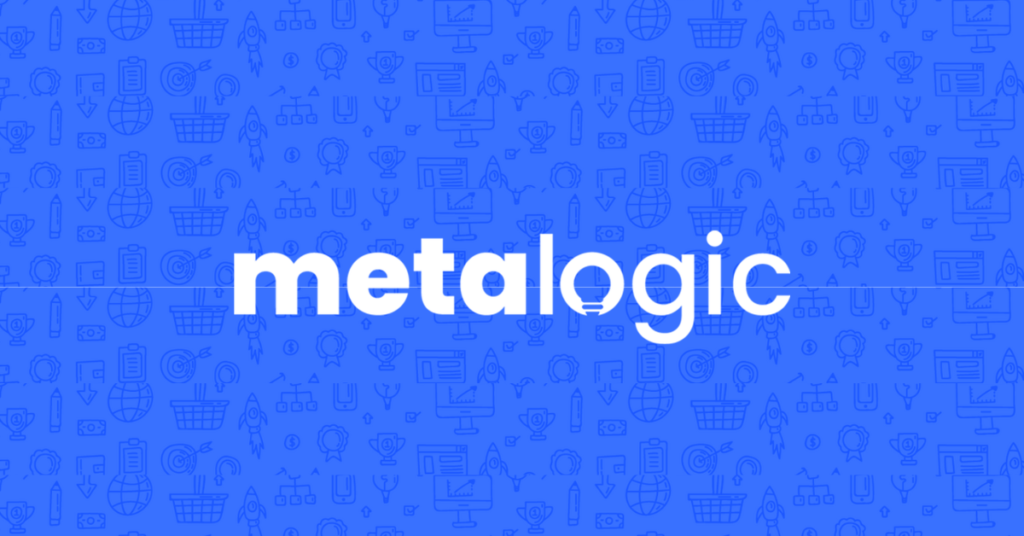Google Ads Bidding Strategies

Nick Czerwinski
PPC & Local SEO Specialist
Google Ads is one of the most powerful advertising platforms available to businesses today, with over 3.5 billion searches conducted daily on Google. However, you must understand the various bidding strategies available to make the most of your Google Ads campaigns. Bidding strategies determine how much you’re willing to pay for each click, impression, or conversion and can significantly impact the effectiveness and cost of your campaigns. This blog will explore the different Google Ads bidding strategies available, their benefits, and when to use them. Whether you’re a beginner or an experienced advertiser, this guide will help you make informed decisions to optimize your Google Ads campaigns.
Manual Bidding
Manual bidding is the most basic and straightforward bidding strategy on Google Ads. With this strategy, you set your bids manually for each keyword, ad group, or campaign. This approach gives you complete control over your submissions, allowing you to adjust them to achieve your advertising goals.
Manual bidding is ideal for businesses starting with Google Ads or small advertising budgets. This strategy is also helpful for advertisers who have specific target metrics they want to achieve, such as a specific cost per click (CPC) or return on investment (ROI).
To set up a manual bid, follow these steps:
- Log in to your Google Ads account and navigate to the Campaigns tab.
- Select the campaign you want to work on.
- Click the ad group if you want to add a bid.
- Click the “Bid” column next to the keyword you want to set a bid for.
- Enter your bid amount.
- Click “Save.”
Campaign > Ad Group > Search Keywords > Max. CPC
Remember that with manual bidding, you’ll need to monitor your campaigns regularly to ensure that your bids are still competitive and delivering results. If your ads are not performing as well as you’d like, you may need to adjust your bids or consider a different bidding strategy.
Target CPA Bidding
Target CPA (Cost-Per-Acquisition) bidding is a smart bidding strategy that uses machine learning to optimize your bids for conversions automatically. With this strategy, you set a target CPA, the average amount you will pay for each conversion. Google Ads will then adjust your bids in real-time to maximize conversions while staying within your target CPA.
Target CPA bidding is ideal for businesses with a specific cost-per-acquisition goal or those with historical conversion data in their account. It’s also an excellent option for advertisers who want to save time on manual bid adjustments and allow Google’s machine-learning algorithms to do their work.
To set up a Target CPA bid, follow these steps:
- Log in to your Google Ads account and navigate to the Campaigns tab.
- Select the campaign you want to work on.
- Click the “Settings” tab.
- Under “Bidding,” click “Change bid strategy.”
- Select “Target CPA” from the list of options.
- Enter your target CPA.
- Click “Save.”
Campaign > Settings > Bidding > “Change bid strategy” > Target CPA
Once you’ve set up your Target CPA bid, Google Ads will automatically adjust your bids to get as many conversions as possible within your target CPA. Remember that it may take some time for Google’s machine learning algorithms to learn and adjust to your account’s performance, so it’s essential to be patient and monitor your campaigns regularly.
Target ROAS Bidding
Target ROAS (Return On Ad Spend) is another smart bidding strategy that uses machine learning to optimize your bids for maximum revenue automatically. With this strategy, you set a target ROAS, the average revenue you want to generate for every dollar spent on advertising. Google Ads will then adjust your bids in real-time to maximize revenue while staying within your target ROAS.
Target ROAS bidding is ideal for businesses with a specific revenue goal in mind or those with historical conversion and revenue data in their account. It’s also an excellent option for advertisers who want to save time on manual bid adjustments and allow Google’s machine-learning algorithms to do their work.
To set up a Target ROAS bid, follow these steps:
- Log in to your Google Ads account and navigate to the Campaigns tab.
- Select the campaign you want to work on.
- Click the “Settings” tab.
- Under “Bidding,” click “Change bid strategy.”
- Select “Target ROAS” from the list of options.
- Enter your target ROAS.
- Click “Save.”
Campaign > Settings > Bidding > “Change bid strategy” > Target ROAS
Once you’ve set up your Target ROAS bid, Google Ads will automatically adjust your bids to maximize revenue while staying within your target ROAS. Remember that it may take some time for Google’s machine learning algorithms to learn and adapt to your account’s performance, so it’s essential to be patient and monitor your campaigns regularly.
Enhanced CPC Bidding
Enhanced CPC (Cost-Per-Click) is a bidding strategy that uses machine learning to adjust your bids in real time based on the likelihood of a click leading to a conversion. With this strategy, you manually set your bids for each keyword, ad group, or campaign. Still, Google Ads will automatically adjust your bids up or down by up to 30% based on the likelihood of a conversion.
Enhanced CPC bidding is ideal for businesses that want to maximize conversions while still maintaining some manual control over their bids. It’s also an excellent option for advertisers with conversion tracking set up in their accounts and who want to use Google’s machine-learning algorithms to improve their campaign performance.
To set up Enhanced CPC bidding, follow these steps:
- Log in to your Google Ads account and navigate to the Campaigns tab.
- Select the campaign you want to work on.
- Click the “Settings” tab.
- Under “Bidding,” click “Change bid strategy.”
- Select “Enhanced CPC” from the list of options.
- Click “Save.”
Campaign > Settings > Bidding > “Change bid strategy” > “Or, select a bid strategy directly (not recommended) > Manual CPC > “Help increase conversions with Enhanced CPC” > Optimize for conversions
Once you’ve set up Enhanced CPC bidding, Google Ads will automatically adjust your bids to maximize conversions based on the likelihood of a click leading to a conversion. Remember that this strategy may result in higher CPCs, so monitoring your campaigns regularly and adjusting your bids to achieve your advertising goals is essential.
Maximize Conversions Bidding
Maximize Conversions is a smart bidding strategy that uses machine learning to automatically set bids to get the maximum conversions within your budget. With this strategy, you set a daily budget for your campaign, and Google Ads will automatically adjust your bids to get the maximum number of conversions possible.
Maximize Conversions bidding is ideal for businesses with limited time to manage their campaigns and who want to maximize their conversions within their budget. It’s also an excellent option for advertisers with a clear goal, such as increasing website sign-ups or generating more leads.
To set up Maximize Conversions bidding, follow these steps:
- Log in to your Google Ads account and navigate to the Campaigns tab.
- Select the campaign you want to work on.
- Click the “Settings” tab.
- Under “Bidding,” click “Change bid strategy.”
- Select “Maximize Conversions” from the list of options.
- Enter your daily budget.
- Click “Save.”
Campaign > Settings > Bidding > “Change bid strategy” > Maximize Conversions
Once you’ve set up Maximize Conversions bidding, Google Ads will automatically adjust your bids to maximize conversions within your daily budget. Remember that this strategy may result in higher CPCs, so monitoring your campaigns regularly and adjusting your budget and bids to achieve your advertising goals is essential.
Honestly, I consider him part of my Team as well, he really cares about our success. As we grow, he will grow with us. I’m excited about the journey and future with Mike and his Team at Metalogic! If you’re looking at Internet Marketing for your business, simply put he’s the best!

Chris Chustz
Owner, Family First Mortgage
Pros and Cons of Each Google Ads Bidding Strategy and When to Deploy Them
Manual CPC Bidding
Pros:
- Gives you complete control over your bids.
- Allows you to set bids for individual keywords or ad groups.
- Easy to set up and understand.
Cons:
- Time-consuming to manage.
- Requires ongoing monitoring and adjustment.
- Not ideal for businesses with limited time or resources.
When to Deploy:
Manual CPC bidding is best for businesses that want complete control over their bids and are willing to invest the time and resources necessary to manage their bids effectively. This strategy is ideal for managing companies with a limited budget or a few keywords or ad groups.
Enhanced CPC Bidding
Pros:
- Automatically adjusts bids based on the likelihood of a conversion.
- Can increase conversion rates while staying within your budget.
- Easy to set up and understand.
Cons:
- Requires conversion tracking to be enabled.
- May increase costs if not monitored closely.
- Not ideal for businesses with strict budget constraints.
When to Deploy:
Enhanced CPC bidding is best for businesses that want to increase their conversion rates without significantly increasing their budget. This strategy is ideal for companies that understand their cost per conversion and want to optimize their bids for conversions.
Target CPA Bidding
Pros:
- Automatically adjusts bids to help you get as many conversions as possible at your target CPA.
- Ideal for businesses that want to maximize conversions while keeping costs under control.
- Requires historical conversion data in your account.
Cons:
- May take time for Google’s machine learning algorithms to learn and adjust to your account’s performance.
- Not ideal for businesses with limited conversion data.
When to Deploy:
Target CPA bidding is best for businesses wanting to maximize their conversions while controlling costs. This strategy is ideal for companies with historical conversion data in their account and want to optimize their bids for conversions.
Target ROAS Bidding
Pros:
- Automatically adjusts bids to help you maximize your conversion value while achieving your target ROAS.
- Ideal for businesses that want to optimize their conversion value while controlling costs.
- Requires historical conversion value data in your account.
Cons:
- May take time for Google’s machine learning algorithms to learn and adjust to your account’s performance.
- Not ideal for businesses with limited conversion value data.
When to Deploy:
Target ROAS bidding is best for businesses that want to maximize their conversion value while controlling their costs. This strategy is ideal for companies with historical conversion value data in their account and want to optimize their bids for conversion value.
Maximize Clicks Bidding
Pros:
- Automatically sets bids to help you get as many clicks as possible within your budget.
- Ideal for businesses that want to drive traffic to their website.
- Easy to set up and understand.
Cons:
- May not drive high-quality traffic.
- May only result in conversions if the traffic is relevant to your business.
When to Deploy:
Maximize Clicks bidding is best for businesses that want to drive traffic to their website without worrying about conversions. This strategy is ideal for companies with a flexible budget and wishing to increase brand awareness or traffic.
Target Impression Share Bidding
Pros:
- Helps you achieve a specific impression share goal for your ads.
- Ideal for businesses that want to increase brand awareness or visibility.
- Can help you identify where you have room to improve ad relevance and landing page experience.
Cons:
- May increase costs if not monitored closely.
- Not ideal for businesses with strict budget constraints.
When to Deploy:
Target Impression Share bidding is best for businesses that want to increase their brand awareness or visibility on Google. This strategy is ideal for companies that want to ensure their ads show in a specific location or position on the search results page.
Overall, your bidding strategy should align with your business goals and budget. It’s essential to regularly monitor and adjust your bidding strategy to ensure you’re getting the best results for your investment. Remember that Google’s machine learning algorithms need time to learn and adapt to your account’s performance, so give your bidding strategy time to optimize before making significant changes.
Custom Marketing Plans Starting at $500 / month
Best Practices for Using Google Ads Bidding Strategies
In addition to understanding the different Google Ads bidding strategies, there are several other factors to consider when choosing the best strategy for your business:
- Budget: Before choosing a bidding strategy, it’s essential to consider your budget. Some strategies, such as Maximize Conversions or Target ROAS, require a higher budget to be effective. If your budget is limited, you may need to choose a more conservative strategy, such as Manual CPC or Enhanced CPC.
- Competition: The level of competition in your industry or market can also impact your bidding strategy. If you’re in a highly competitive market, you may need to bid more aggressively to ensure your ads are seen. On the other hand, if there’s little competition, you can bid more conservatively and still get good results.
- Seasonality: Some businesses experience fluctuations in demand based on the time of year or season. For example, a retailer may experience higher demand during the holiday season. You may need to adjust your bidding strategy during peak seasons to ensure you’re getting the best results.
- Ad Copy and Landing Pages: Your ad copy and landing pages can also impact the performance of your bidding strategy. Ensure your ad copy and landing pages are relevant to the keywords you’re targeting to improve your Quality Score and ad relevance. This can help you get more clicks and conversions at a lower cost per click.
- Testing: Finally, it’s essential to regularly test different bidding strategies to see what works best for your business. Try different strategies on other campaigns or ad groups to see which ones perform best. This can help you optimize your bidding strategy and get better results.
By considering these additional factors when choosing a bidding strategy, you can ensure that you’re getting the best results for your business and making the most of your Google Ads investment.
Conclusion
In conclusion, choosing the right bidding strategy is essential to achieving success with Google Ads. Whether you want to drive more traffic, increase conversions, or boost brand awareness, various bidding strategies can help you achieve your goals. From manual bidding to automated strategies like Target CPA and Target ROAS, each strategy has pros and cons depending on your business goals, budget, and target audience.
When selecting Google Ads bidding strategies, it’s essential to consider factors like your business goals, competition, and budget. Testing different strategies, monitoring your campaigns regularly, and optimizing your ad copy and landing pages are also critical to success with Google Ads. By following best practices and staying up-to-date with the latest trends and changes in the world of Google Ads, you can optimize your campaigns and achieve better results for your business.
Remember, Google Ads is a powerful tool for businesses of all sizes, and selecting the right bidding strategy can make all the difference in your success. We hope that this guide has been helpful in understanding the different Google Ads bidding strategies available and how to use them effectively. By implementing these strategies, you can drive more traffic, increase conversions, and grow your business with Google Ads.
Become A Google Ads Specialist With MetaLOGIC's Local Digital Marketing Academy
Get your business in front of the right people with Google Ads. From display and search campaigns to Shopping and video campaigns, there’s a way to reach your target audience on the Google Ads platform. Don’t wait to see results – Learn more about our Google Ads Online Training Course.








